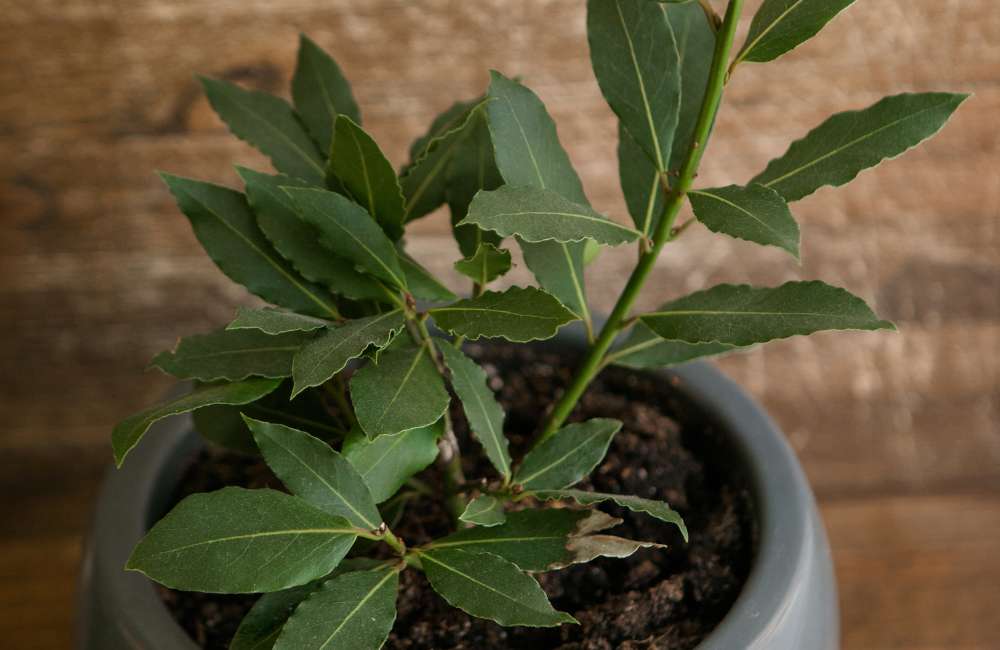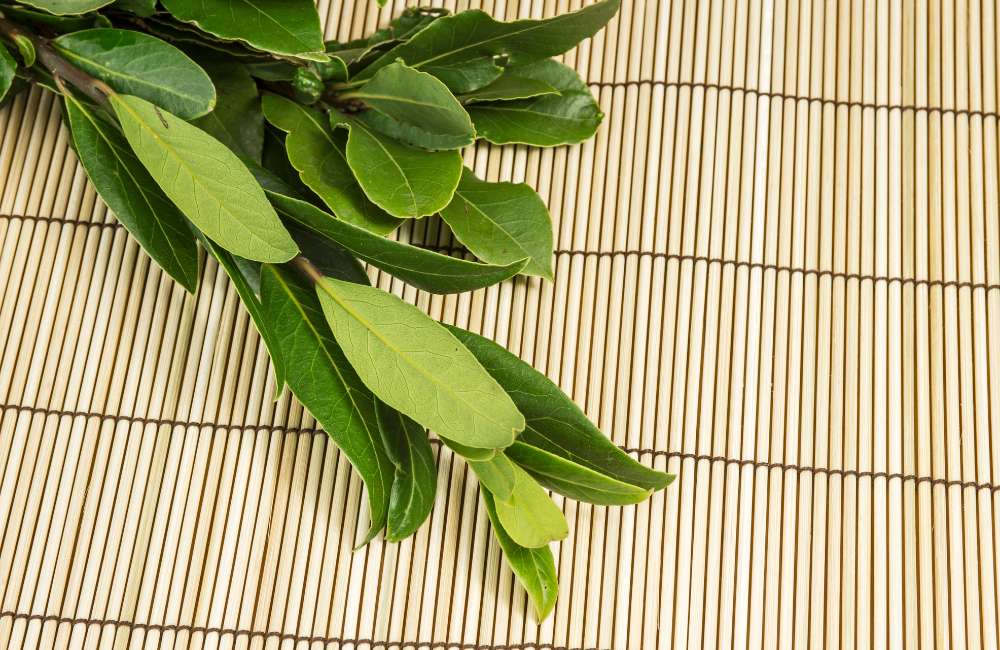Bay leaf (Laurus nobilis) is an evergreen perennial shrub that belongs to the family laurel (Lauraceae). The genus Laurus has many species and their varieties are native to the Southern Mediterranean region, the subtropics and tropics of Eastern Asia, South and North America, the Balkans and Asia Minor.
The variation among the species is largely attributed to the differences in morphology, flower color, growth habitat, leaves, stems and chemical composition.
It has been cultivated throughout the European, tropical, subtropical, and Asian countries. The Greeks made it famous by crowning their heroes with wreathes made out of sweet bay leaves.
It is an herb that is commonly used in cooking. The leaves and oil are also used to make medicine. Contrary to popular myth, the bay leaf is not poisonous.
It is known by other names viz: Bay, Bay Laurel, Bay Tree, Daphne, Grecian Laurel, Laurel, Sweet Bay, Roman Laurel, True Bay, Sweet Laurel Mediterranean Bay etc.
Description Of Bay Leaf
It is a multibranched, deciduous shrub having height up to 6-8m and diameter up to 15-40cm with smooth, thin, and brown bark containing a shady crown.
The leaves are alternate, lanceolate, and bipinnate compound with smooth or sharp margins 29-30 cm long containing 24 leaflets that are lanceolate, 4.8-4.9 cm long, and 1.7-1.8 cm wide with 0.5 cm long petiole.
The flowers are four-lobed, white, scented and small, having 8-12 male stamens and 2-4 female staminoids, and the fruit is 10-15 mm, in small clusters, ovoid, thin pericarp enclosing spinach green seeds and black when ripe.
Nutritional Content Of Bay Leaf
It is a good source of
- Vitamin A.
- Vitamin C.
- Vitamin D.
- Vitamin B6.
- Calcium.
- Iron.
- Manganese.
- Potassium.
- Magnesium
- Sodium.
- Protein.
- Carbohydrate.
- Fat.
Phytochemical Constituent Of Bay Leaf
Phytochemicals are bioactive compounds found in plants that work with nutrients and dietary fiber to protect against diseases. They are non-nutritive compounds (secondary metabolites) that contribute to flavor color.
The bay leaf has a sharp and bitter taste. The difference in fragrance and aroma is due to the presence of essential oils in the leaves and other parts of the plant. Some of the phytochemical constituent in bay leaf are as below:
- Flavonoids .
- Flavones.
- Tannins .
- Eugenol.
- Methyl eugenol.
- Elemicin.
- Citric acid.
- Steroids.
- Alkaloids.
- Triterpenoids.
- Essential oils.
- Linalool.
- Methyl chavicol.
- Anthocyanins.
How To Process After Harvest
Bay leaf can be harvested at any time of the year from a fully mature plant. Fresh bay leaves have a bitter and pungent taste; therefore, before use, leaves should be dried.
The leaves should be left for 48-72 hours for drying. Better and deeper flavor is observed in freshly dried leaves. Note that harvesting these leaves should not be done when plant is wet.

How Is Bay Leaf Consumed?
It can be consumed in various ways and for various purposes.
- The fresh leaves can be used unprocessed or frozen for extended time beyond its fresh shelf life.
- The leaves can be dried whole.
- The leaves can also be dried and turned into powdered form.
- The essential oils can equally be extracted and used as such.
There are two ways of drying the bay leaves:
- The traditional way of drying in open air for 10-12 days. The disadvantage of this method (sun drying) is that the natural color and essential oils are lost thus lowering the market value.
- Hot air drying at 60
C is the best.
Steam distillation is the best method for recovering the essential oils.
Bay leaf can of course be combined with other spices and herbs like cloves, thyme, mustard, parsley, paprika, sage and pepper in soups and stews.
Uses Of Bay Leaf
It is not clear how much bay must be consumed to get its health benefits. Researchers do not have particular recommendations about the specific amount to be used. Nevertheless, bay is full of antioxidants and it is a good source of dietary fibers. It complements food flavors and bay tea is used to:
- Treat stomachaches.
- Clears up mucus in the lungs.
- Colds.
- Sore throat.
The poultice of bay leaves is also used for treating rheumatism, neuralgia and gastrointestinal problems such as:
- Impaired digestion.
- Flatulence.
- Eructation.
- Epigastric bloating.
It is also used as a diuretic and analgesia. Other uses are:
- Skin rashes.
- Earaches.
- Rheumatism.
- Body odor.
Bay leaf is also used in the treatment of arthritis, headache, fungal diseases, anorexia, colds, cataracts, diarrhea, colic ulcer, appetizer, neuralgia and as a digestive stimulant traditionally and is found to be effective against many infections from fungi, viruses, bacteria, and protozoa.
Bay is also helpful in inhibiting growth of carcinogenic cells and is specific for many fevers, cough, flu, bronchitis, asthma, influenza, cough, cold, lowering blood cholesterol level, chicken pox, diarrhea and anti-stress agent.
Bay juice is an effective medication for sore eyes, night blindness generally caused by vitamin A deficiency. Fresh, mature leaves are used to treat dysentery, inflammation and congestion of kidney. The antidiarrheal, anti-inflammatory and antidiabetic activity are used for the improvement of the immune system.
Also, bay leaf essential oil is used in cosmetic industry for soaps, perfumes and can be important ingredient in teas, oils, cheeses and liquors. The Bay seeds are mucilaginous and relieve indigestion, sore throat, constipation, and diarrhea.
Bay has so many uses traditionally, ranging from culinary to religious. The leaves are said to aid with psychic powers, particularly prophetic dreams, clairvoyance, protection, healing, clairvoyance, protection, healing, purification, strength, wishes, magic, divination, visions, inspiration and accessing creative world.
The Israelites consider the bay leaf as a symbol of victory over misfortune while the Romans believe that the tree protects from lightening.
Pharmacological Activities/Uses
The pharmacological activities are actually the actions various extracts of bay leaf elicit in the body as discovered through various studies on the leaf. They are as follows:
- Wound Healing
It was discovered that aqueous extract of bay leaf has a very high and fast wound healing activity.
- Antioxidant Effect
The high antioxidant property is largely due to the presence of phenolic compounds present in the extract.
- Anticonvulsant Activity
Bay leaf oil showed anticonvulsant activity in mice. Essential oil components such as eugenol, pinene and methyl eugenol are responsible for this activity.
- Analgesic And Anti-Inflammatory Activity
The essential oil of bay leaf showed analgesic and anti-inflammatory activities in experimental mice and rats.
- Antiviral Activity
The essential oil from bay leaf was reported to have inhibitory activity in vitro against SARS-CoV and HSV-1 replication.
- Insect Repellent Activity
Bay leaf essential oils extracted from seeds were reported to have insect repellant activity.
- Antimicrobial Activity
A study reported that the aqueous decoction of bay leaf showed 53.4% of bactericidal effect against 176 bacterial isolates belonging to 12 different genera of bacterial population isolated from oral cavity of 200 individuals.
- Acaricidal Activity
Acaricide is a substance used to kill ticks and mites. The acaricidal activity of bay oil led to a mortality rate of 73% at a concentration of 10% and at 5% average activity was considerably reduced to 51%.
- Anticholinergic Activity
The essential oil, ethanolic extract and decoction of bay leaf were reported to have anticholinergic activity towards acetylcholinesterase enzyme.
Side Effects And Toxicity
- Bay leaf and bay leaf oil are likely safe for most people in food amounts. There is no choke possibility with ground bay leaf as with whole leaf. The whole leaf cannot be digested, so it remains intact while passing through the digestive system.
- There is not enough reliable information about the safety of taking bay leaf during pregnancy and breastfeeding. It is better to avoid during this period.
- Bay leaf might interfere with blood sugar control and may not be safe to use in diabetic state. If you must take as a diabetic, you have to monitor your blood sugar closely.
- Bay leaf might slow down the central nervous system (CNS). There is a concern that it might slow down the CNS too much when combined with anesthesia and other medications used during and after surgery. It is recommended to stop using bay leaf as a medicine at least 2 weeks before a scheduled surgery. Taking large amounts of bay leaf along with sedative medications might cause too much sleepiness. Some of these medications include lorazepam, clonazepam, phenobarbital etc.
- Taking bay leaf in large amounts may relieve pain but cause sleepiness. Some medications for pain also cause sleepiness and should never be taken together with large amount of bay leaves as this may increase the effects and side effects of the medication.
Conclusion
It is important to keep in mind that natural products are not always necessarily safe and dosages can be important. At this time there is not enough scientific information to determine an appropriate range of doses for bay leaf.
Make sure you follow relevant directions on product labels and consult your pharmacist or physician or other healthcare professional before using.

